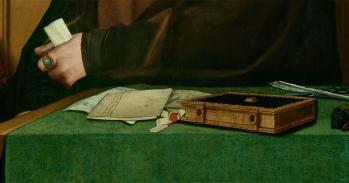
The imperial treasures of the Hapsburgs – including Miseroni’s lost Royal masterpiece – have gone on display at the Fitzwilliam Museum.
The imperial treasures of the Hapsburgs – including Miseroni’s lost Royal masterpiece – have gone on display at the Fitzwilliam Museum.
Widely regarded as the most important collection of its kind anywhere in the world, the Vienna Kunstkammer provides a fascinating insight into how European princely collections have evolved, from medieval troves of relics to the ‘cabinets of curiosities’ of the Renaissance and early Baroque, eventually giving birth to the modern-day museum.
Timothy Potts
Running from today until January 8, 2012, Splendour and Power: Imperial Treasures from Vienna, brings together a glittering collection of beautifully crafted cameos, jewellery, vessels and other objects made from gems,precious metals and hardstones from the renowned Kunstkammer collection of the Kunsthistorisches Museum in Vienna.
Originating in the medieval treasure trove of the House of Hapsburg, the collection was once safeguarded in the Imperial Treasury in Vienna.
These objects, almost all of which are unique creations, were designed to demonstrate the incredible wealth, power and glory of the Hapsburg dynasty, and initially only visitors of noble birth - such as princes of neighbouring countries or diplomatic delegations – were granted access.
Never before seen together in the UK, this remarkable exhibition has been further boosted by the late addition of a lost Royal masterpiece created by the greatest of all hardstone engravers of the Renaissance period, Giovanni Ambrogio Miseroni.
Venus and Cupid Sleeping on a Shell, was created around 1600 from precious agate and set in a silver mount. However, it was unknown and untraced from 1796 onwards until recently when it was rediscovered in a Swiss private collection.
Sold to a private collector at Sotheby’s London last month, this incredible Renaissance treasure will be reunited with other masterpieces made by the Miseroni workshop for the Royal House of Austria during the Cambridge showing.
Venus and Cupid Sleeping on a Shell is believed to have been created for Emperor Rudolph II in the late 16th century. At an unknown point it left the Imperial collection and ended up in the collection of King Louis XIV of France before being sold on in 1796.
Thanks to the generosity of its new owner following the auction at Sotheby’s, it will be included in the exhibition, reuniting it with other Miseroni masterpieces from the Imperial collection.
The exhibition’s focus is upon artworks from the late Renaissance and Mannerist periods - the heyday of treasuries and ‘cabinets of curiosities’ - as well as from the Baroque. Many of the works on display belonged to Emperor Rudolph II – Holy Roman Emperor (1576-1612) - and Empress Maria Theresa, the only female Hapsburg ruler and the last of the House.
Giving a rare glimpse into the opulent world of the Hapsburg emperors, the exhibition features:
- intricate portrait cameos, many bearing the likenesses of the Hapsburg sovereigns crafted in the style of ancient Roman imperial portraits
- exquisite jewellery, from necklaces, pendants and lockets to rings and enseignes, complemented by pre-eminent examples of medieval and Renaissance jewellery
- ornate goldwork, vessels and coffers, including a bowl featuring embedded Roman coins, and a serpentine tankard
- stonework, carving and sculpture, with precious objects crafted from agate, jasper, rock-crystal and lapis lazuli, including a cup made from rhinoceros horn and a Chinese jade bowl
- a 15th century enamel model of the Annunication from the Fitzwilliam’s own collection. Once kept in the Imperial Treasury, it is now reunited with these other Hapsburg treasures for the first time since the 1860s.
Dr Timothy Potts, Director of the Fitzwilliam Museum, said: “The Fitzwilliam is delighted to welcome this superb collection to Cambridge for its first and only UK showing.
“Widely regarded as the most important collection of its kind anywhere in the world, the Vienna Kunstkammer provides a fascinating insight into how European princely collections have evolved, from medieval troves of relics to the ‘cabinets of curiosities’ of the Renaissance and early Baroque, eventually giving birth to the modern-day museum.”
This work is licensed under a Creative Commons Licence. If you use this content on your site please link back to this page.




